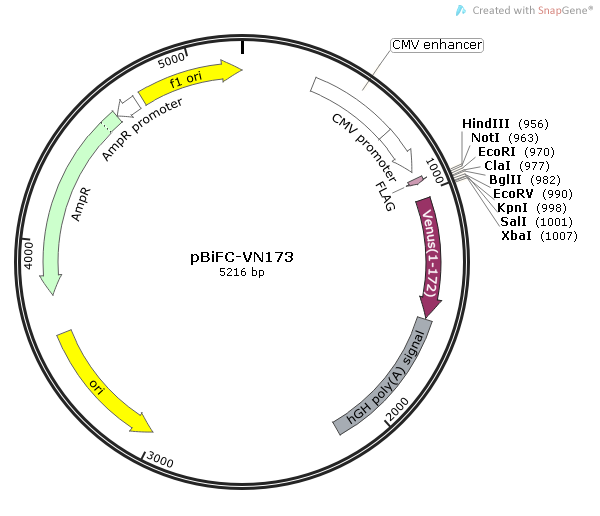
|
品牌 |
酶研生物 | |||||||||||
货号 |
MY1161 | |||||||||||
规格 |
2ug | |||||||||||
价格 |
询价 | |||||||||||
货期 |
现货 | |||||||||||
Objective: To construct pBIFC-VN173-CXCR4 and pBIFC-VC155-NT21MP eukaryotic expression plasmids and to investigate the interaction of chemokine receptor 4 (CXCR4) and viral macrophage inflammatory protein-II(vMIP-II) N terminal 21 peptides (NT21MP) in living cells. Methods: DNA fragment encoding NT21MP was chemically synthesized and inserted into BiFC eukaryotic expression vector pBIFC-VC155. The full length of CXCR4 DNA fragment was amplified by RT-PCR from SKBR (3) cells and inserted into BiFC eukaryotic expression plasmid pBIFC-VN173. Two recombinant vectors were identified by restriction enzyme digestion and DNA sequencing. The recombinant vectors were cotransfected into Africa green monkey kidney fibroblast COS-7 cells by using Lipofectamine 2000. The interaction of NT21MP and CXCR4 was detected by bimolecular fluorescence complementation (BiFC) assay. Results: The restriction enzyme digestion and DNA sequences and open read frames of two vectors were consistent with experiment design. The BiFC plasmids were successfully cotransfected into the target cells and expressed. The strong BiFC signals were detected in pBIFC-VN173-CXCR4 and pBIFC-VC155-NT21MP cotransfected cells and the fluorescence signal was located in the cytoplasm. Conclusion: The eukaryotic expression plasmids for BiFC assay are successfully constructed. The interaction of NT21MP and CXCR4 in living cells can be detected by using this technology.
|
|
|||||||||||










